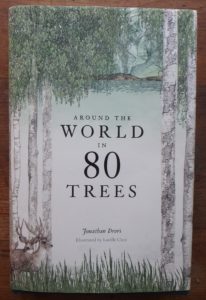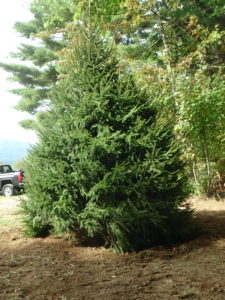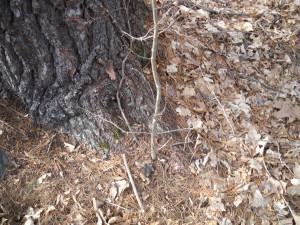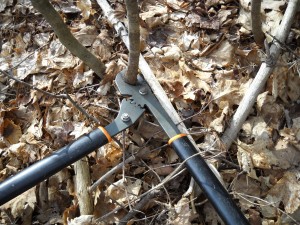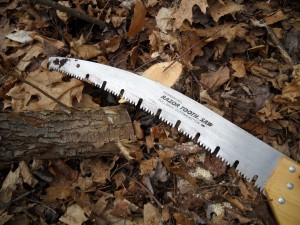Around the World in 80 Trees
I love trees, and find them endlessly fascinating. Each is unique, much as we are. One winter I attempted (and failed) to read all of Michael Dirr’s authoritative Dirr’s Encyclopedia of Trees and Shrubs – all 950 pages of it. I only read about trees that are hardy here, and still only found time to read about half of it.
Recently I found a more manageable project, reading Jonathan Drori’s Around the World in 80 Trees. At just over 200 pages, and nearly half of that illustrations, it gave me the satisfaction of a project easily completed. And it provided countless bits of information that I didn’t know.
For example, I never knew that the great violin builders Stradivarius and Guarneri used Norway spruce for their sounding boards. Apparently Norway spruce, particularly old ones that grew on the mountains of Switzerland, are very dense but lightweight – and perfect for violins.
And alders were important for the development of Venice, Italy. Apparently it is highly resistant to rot if submerged in water. Their engineers drove stakes of alder (9 per square meter) and filled in around them and over them with rocks and broken bricks. Then they built bridges and buildings on them – many of which still are solidly in place, up to 700 years later.
Also the Venetians used alders to make the best charcoal for gunpowder, allowing them to advance militarily. Even today the best gunpowders use charcoal from alders. And I thought alders were junk.
I recently bought some shampoo which touted that it contained “argan oil”. Huh? I’d never heard of argan, and it sounds to me like something from a factory along I-95 in New Jersey. Nope. It is a tree that grows in North Africa.
Argan produces a fruit the size of a plum with a nut inside with 1 or 2 hard, oil-rich seeds. Traditionally women in Algeria and Morocco harvest the seeds and grind them to a pulp and extract the oil. Amazingly, 3 million people depend on the oil for their income. It is used as cooking oil and in cosmetics. And goats love the fruit, often climbing the trees to get at it – despite the numerous thorns on the branches.
Then I read about the tree that produces quinine, Cinchona spp. Originally from Ecuador and Peru, it produces alkaloids that kill malaria parasites in humans, despite the fact that those two countries had no indigenous malaria. But quinine allowed explorers of tropical malarial zones to survive the ravages of this terrible fever.
And of course, quinine is key to the development of the gin and tonic, invented by the British in India. My grandfather got malaria living near the swamps of East Boston in the early 1900’s and probably resorted to quinine when it recurred – which may have given him an excuse for a gin and tonic from time to time.
I was fascinated to learn that the quaking aspen trees (Populus tremuloides) spread largely by root, and that huge forests of this aspen are all connected by roots, and are essentially one tree. The largest living thing in the world, by this definition, is a single quaking aspen that has 45,000 stems and covers 100 acres of ground. The tree, though not any individual stem, is thought to be 80,000 years old. It is the most widely distributed tree in North America – so you probably have one.
As a teen I read a book by Betty Smith called, A Tree Grows in Brooklyn about a family there. She used the tree as a metaphor for the immigrants struggling to grow in poor conditions, as the tree does. The tree in the title is the invasive Tree of Heaven (Ailanthus altissima).
Originally from China, Tree of Heaven was introduced to New York State in 1820. It grows fast, grows most anywhere, and is nearly impossible to get rid of. Cut one down, and the roots send up new shoots all over – even through a crack in the sidewalk. It is hardy to Zone 4 (minus 30 degrees in winter) but I have never seen one here in New Hampshire.
We all know the Eastern White Pine, but I did not know that it sucks up nitrogen from the soil and saves it for use later. And that in so doing, the pine helps to discourage other trees from competing with it.
I also learned that our sugar maples, when grown in Europe, do not have the bright red leaves we love in autumn. Their fall climate is gray and cool, and maples need bright sun and cold nights to get those red colors. Maybe that is why some years our maples are less impressive – if we’ve had a rainy fall.
I visited a friend in Florida this winter, and went to a mangrove swamp. I learned from this book that the red mangrove (Rhizophora mangle) gives birth to live young while they are still attached to the mother tree. The seeds germinate and grow, eventually dropping off as seedlings. Amazing.
So if you’d like an entertaining read, get a copy of Around the World in 80 Trees. There is plenty more to learn.
Henry is the author of 4 gardening books. His e-mail is henry.homeyer@comcast.net.
Outdoor Work in Early Spring
Before we launch into this week’s article…
Gardening Classes with Henry
Lebanon College: Gardening: A Practical Workshop. Garden writer Henry Homeyer will teach you the basics of organic vegetable and flower gardening. From garden design to seed-starting , planting, watering, weeding, mulching, and harvesting, this course will give each student practical knowledge of gardening. Tuesday nights from 6:30-8:30 for 5 weeks, April 3-May 2.Contact Lebanon College to reserve a spot for this5-part workshop www.lebanoncollege.edu or call 603-448-2445.
AVA Gallery, Lebanon. Henry will teach 3 classes at AVA Gallery this spring. You may sign up for one or all of these workshops:
Sculpting the Living Landscape: Starting Flowers from Seed
April 9; Monday, 6:30–8:30pm; One 2-hour class
Sculpting the Living Landscape: Perfect Perennials for the Upper Valley Garden
April 23; Monday, 6:30–8:30pm; One 2-hour class
Sculpting the Living Landscape: Organic Techniques for Enriching Soil and Managing Pests
May 7; Monday, 6:30–8:30pm; One 2-hour class
For more information go to www.avagallery.org or call 603-448-3117.
Outdoor Work in Early Spring
Despite a spate of warm weather, it’s still early spring. In my world maple sap is running, a little snow is still in the woods and foolish (early bird) robins are losing weight while waiting for the earthworms to surface. It’s still too early to rake my lawn as it’s pretty soggy. My flower beds would suffer from soil compaction if I were to step inside to clean them up. So what can a gardener do?
This is a great time to clean up scrub brush and small trees along stone walls, close to the house and around stately old trees. If you take a look around your property, you will probably see many “volunteer” trees that are growing where they shouldn’t. Now is a good time to snip them back or pull them out before they get large.
Seeds are amazing. Each has the genetic material to create a new plant. They can stay dormant for years, just waiting for the right growing conditions. But they have flaws: they have no eyes – and little common sense. That’s right. A seed will grow wherever ends up, even if it has no chance to reach maturity at its location. So a maple seed may germinate an inch from a mature pine tree, for example. It has no good future there, but it will try anyway. Volunteer trees and shrubs are easy to remove when young. Ideally, you can pull them and they will never come back to bother you again.
There is a tool that can help you do so: the Weed Wrench (www.weedwrench.com). They come in 4 sizes,  from mini to large depending on the size trees you need to remove – and your budget. A Weed Wrench has a mouthpiece that bites down on a trunk, and a steel lever to pull out the culprit using the mechanical advantage of its long arm. They weigh from 5 lbs to 24 pounds and cost between $82 and $189. One might be good investment for your garden club or Scout troop – many people could share it.
from mini to large depending on the size trees you need to remove – and your budget. A Weed Wrench has a mouthpiece that bites down on a trunk, and a steel lever to pull out the culprit using the mechanical advantage of its long arm. They weigh from 5 lbs to 24 pounds and cost between $82 and $189. One might be good investment for your garden club or Scout troop – many people could share it.
But even small trees may have extensive root systems, so if you wish to do a quick-n-easy clean up, go outside with your loppers and get to work. Cut off stems as close to the ground as you can. But be forewarned: many trees will coppice, or send up several new shoots around the stump.
One of the most common invasive shrubs in my neighborhood is the Japanese honeysuckle. It is common along the edges of fields, stonewalls and driveways. A single bush can get to be 10 feet tall and wide. They produce pleasant cream-colored flowers in early summer, and birds like the seeds – which they distribute widely. I cut several big honeysuckles on my property last fall, and just cut off a few more recently. I know they may come back from the roots, but they won’t bloom and produce seeds in their first year, so I am reducing seed production. And if I can remember to cut them back every year or two, I will slow their spread.
Trees compete for nutrients, water and sunlight. If you have an aging maple or other tree that is not in perfect health, cleaning up the scrub around it seems like a logical way to help. Sugar maples, in general, are suffering due to the acid rain that falls here in New England (due to pollutants in the air from coal-burning power plants). Acid rain dissolves calcium in the soil, and allows it to wash away or leach deeper into the soil. Maples in particular suffer when growing in low calcium conditions. So removing vigorous young trees and shrubs from around the maples – their competition – should help.
You can also help your old maples by spreading some limestone around the trees at this time of year. I distribute limestone in a circle about 100 feet in diameter around an aging maple each fall or spring. I don’t do it scientifically, so many pounds per hundred square feet. I just give a light top dressing each year, and know that it helps.
Another reason I get rid of scrub brush is pure aesthetics. Small trees and shrubs distract the eye from the beauty of a stone outcropping or wall. I like simplicity and neatness in my landscape. Scruffy stuff is akin to an unmade bed. Clean it up, and it’s easier to notice the texture of the bark of a mature maple or beech.
Another chore that can be done now is to remove some lower branches of trees alongside your stone wall. In keeping with my desire to simplify the landscape and expose ledge or stonework, I like to cut off branches that I can reach easily – though sometimes I will work up a trunk on a ladder to remove limbs that I cannot reach from the ground. Don’t do maple or birch right now, however, as they will “bleed” sap in quantity.
As much as I enjoy visiting a city, I’m a country boy. I need to go outside most days and do a little work on my landscape. I sometimes wonder if I’ll ever retire from writing so a can putter all day. It’s a temptation.
Henry Homeyer is the author of 4 gardening books. Go to his Web site www.Gardening-Guy.com for more information about gardening. His e-mail is henry.homeyer@comcast.net



